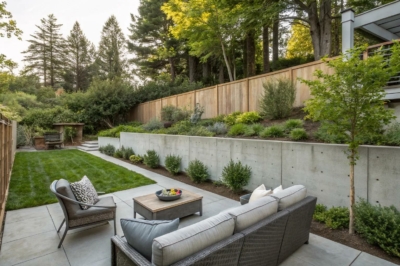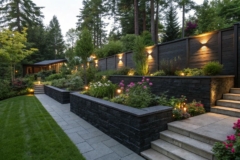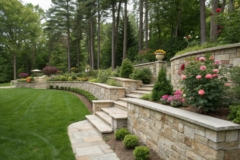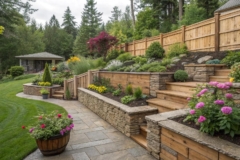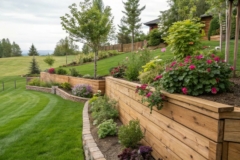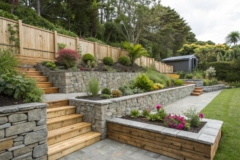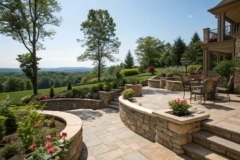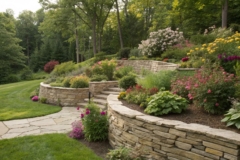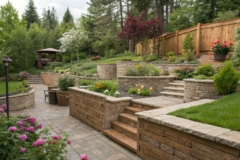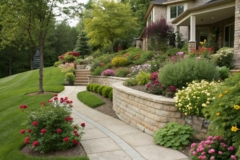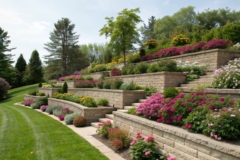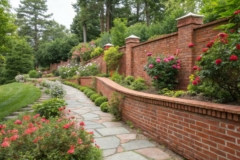1. Terraced Landscaping
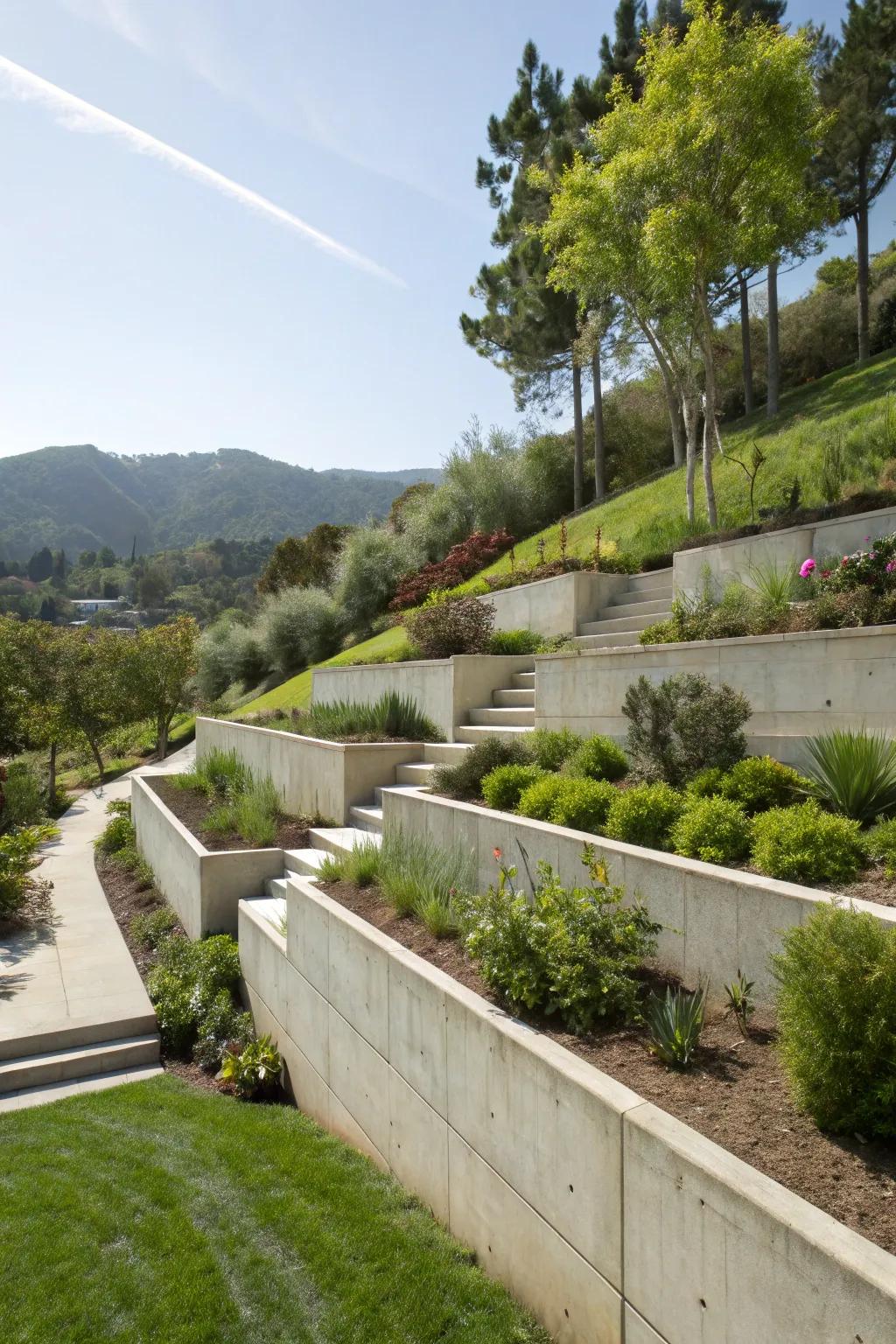
Transform sloped areas with terraced retaining walls, creating flat, usable spaces. I used this technique in a client’s backyard, and it turned a challenging slope into a series of functional terraces.
You might like:
- Concrete Sealer: Protect your retaining walls from weather damage with a durable concrete sealer. Enhance longevity today.
- Landscaping Fabric: Prevent weed growth and improve soil stability beneath terraces using effective landscaping fabric.
- Garden Edge Trim: Define your terrace edges neatly with easy-to-install garden edge trim for a polished look.
2. Textured with Nature
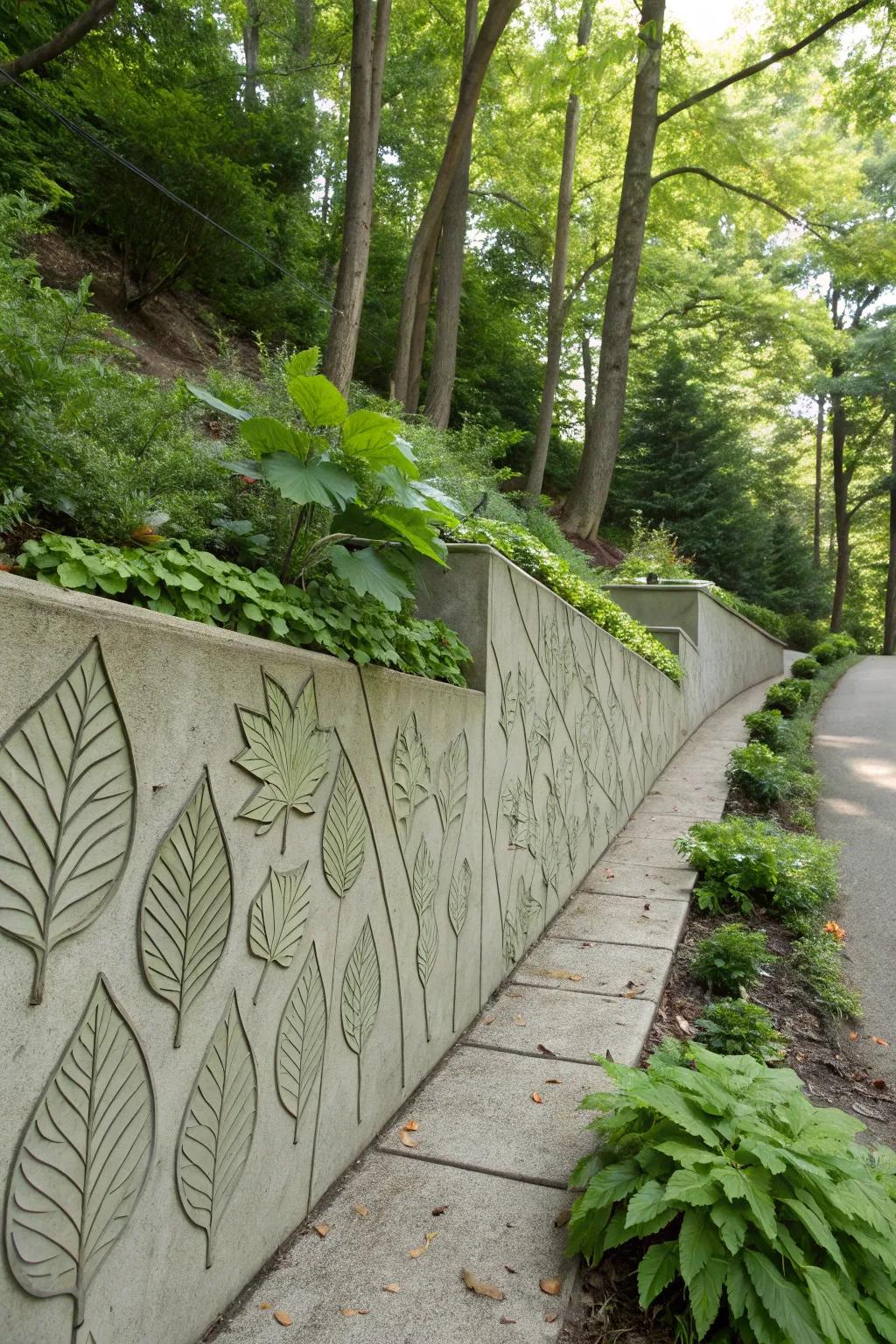
Add a touch of nature by incorporating textured patterns into the surface of your wall. I experimented with leaf imprints on a friend’s garden wall and it beautifully echoed the surrounding foliage.
These products might help:
- Concrete Texture Stamps: Enhance your wall with texture stamps for natural, detailed patterns that bring elegance outdoors.
- Concrete Release Agent: Use release agent for easy stamping, ensuring clean and precise leaf imprints on your wall.
- Concrete Sealer: Apply concrete sealer to protect and preserve textured leaf designs, ensuring lasting beauty outdoors.
3. Add Lighting Features
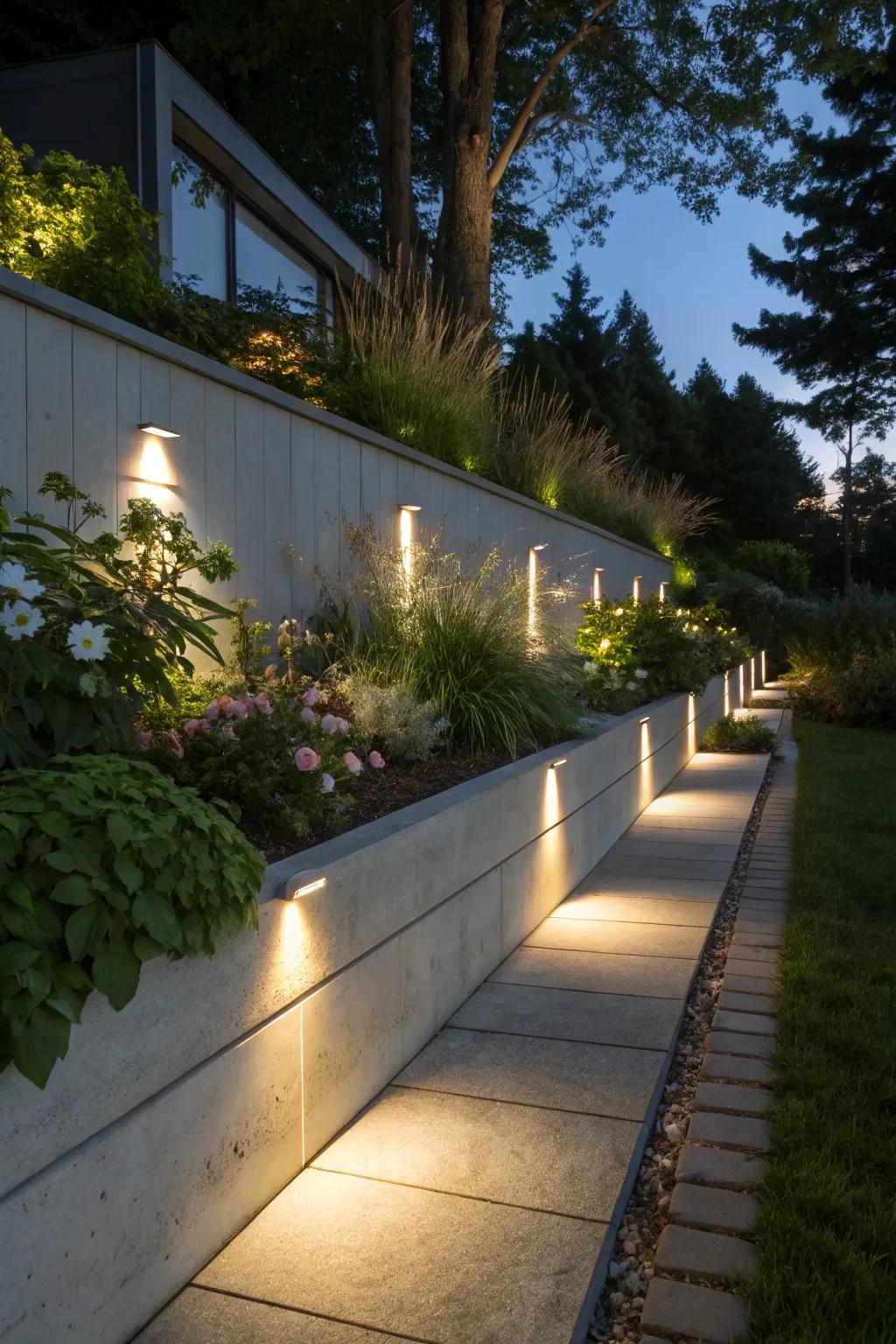
Incorporate lighting into your retaining wall for nighttime allure. I once installed LED strips along a wall’s edge, casting a warm glow that made evening gatherings magical.
Give these a look:
- Outdoor LED Strip Lights: Enhance your retaining wall with warm LED strip lights for a cozy, inviting ambiance.
- Solar-Powered Wall Lamps: Install solar-powered wall lamps to illuminate your garden path with eco-friendly, soft lighting.
- Low Voltage Landscape Lights: Use low voltage lights for a safe and stunning glow highlighting your evening landscape.
4. Incorporate Seating
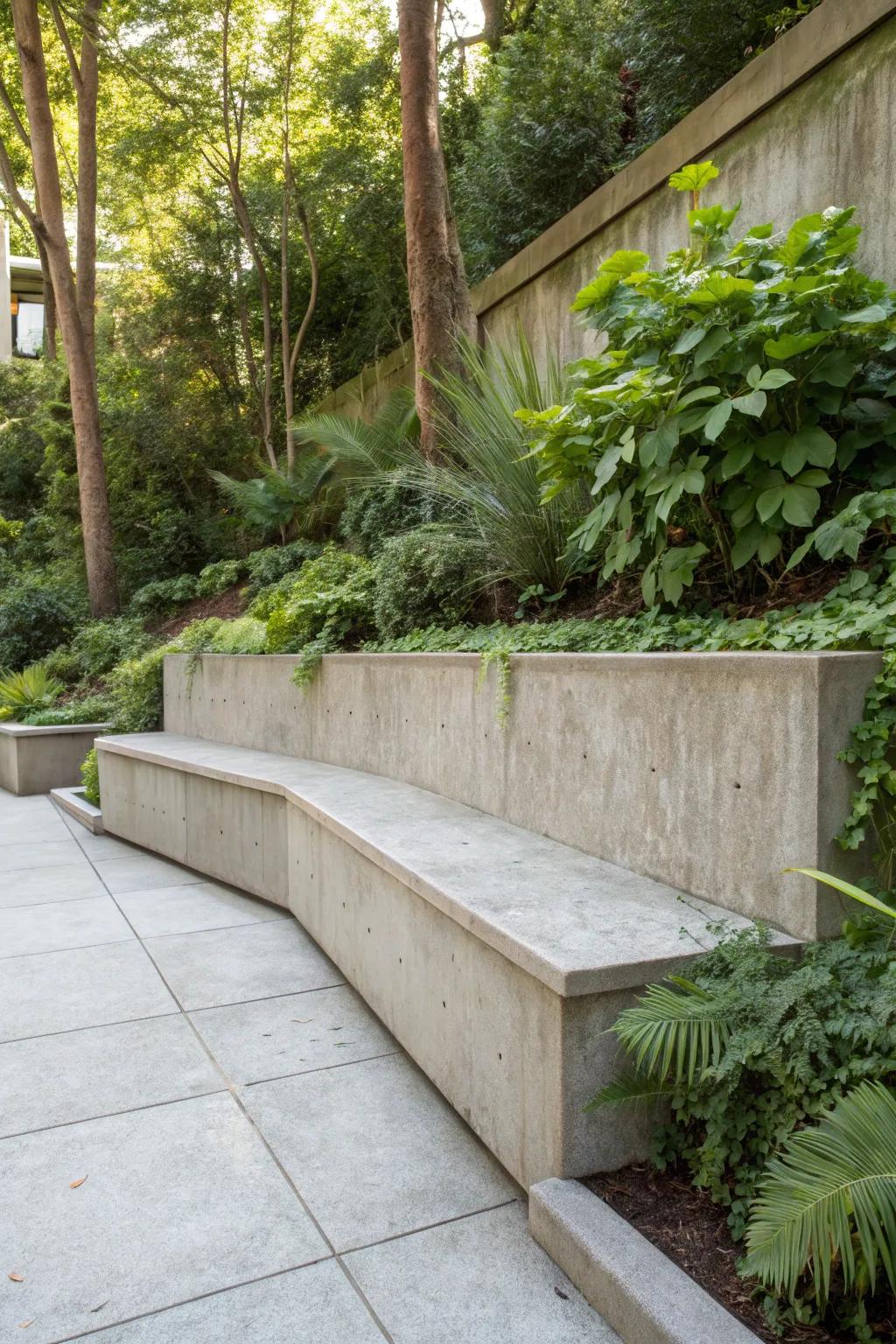
Design the top of your retaining wall as a seating area. I love how this dual-purpose feature creates a cozy spot to relax while enjoying the garden.
Try these:
- Outdoor Bench Cushions: Add comfort to your seating with plush cushions designed for style and durability outdoors.
- Decorative Outdoor Pillows: Brighten up your seating area with colorful, weather-resistant pillows for added style and comfort.
- Outdoor Blanket for Seating Area: Stay cozy and warm with a soft, weather-resistant outdoor blanket perfect for cool evenings.
5. Vertical Stamping for Texture
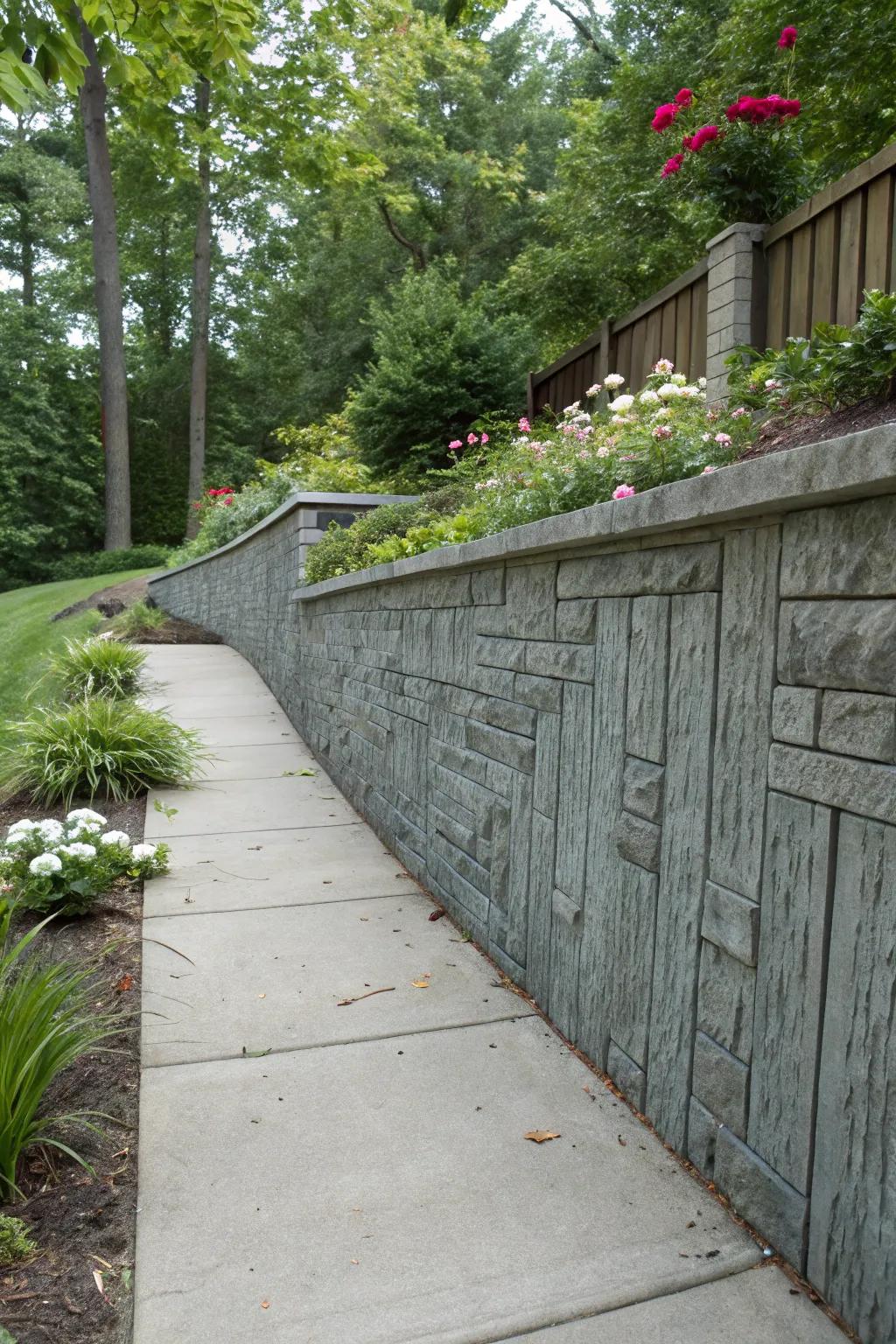
Use vertical stamping to create unique textures on your wall. This technique gave a client’s wall a beautiful slate-like appearance that was both subtle and striking.
A few relevant products:
- Concrete Stamp Mat Slate Texture: Achieve a slate-like finish with these durable and reusable concrete stamp mats for vertical surfaces.
- Concrete Release Agent for Stamps: Ensure smooth stamping with this easy-use release agent, preventing concrete adherence to stamp tools.
- Concrete Stain and Sealer: Enhance color and protect stamped concrete with a professional-grade stain and sealer for long-lasting results.
6. Smooth and Modern Finish
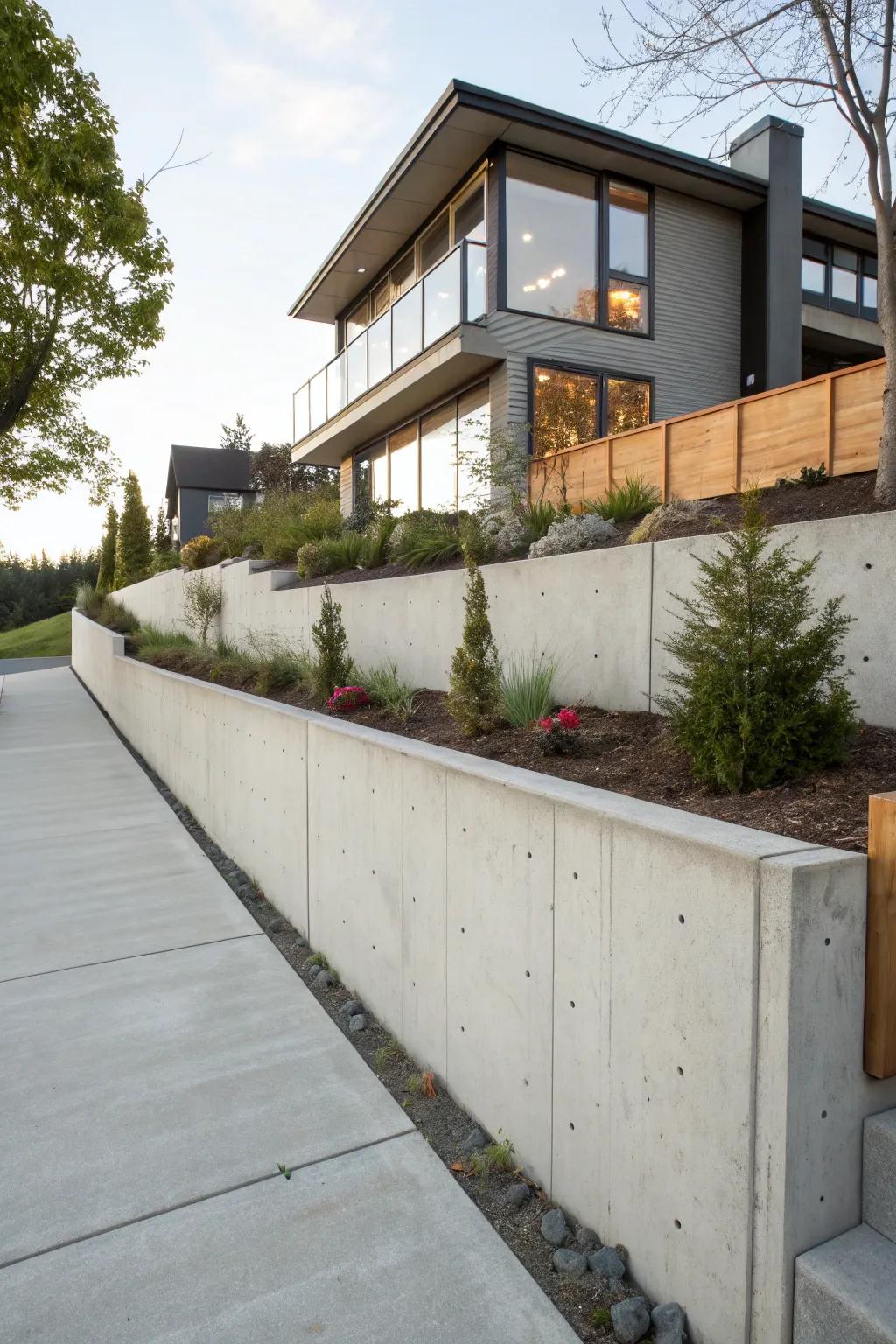
For a contemporary look, opt for a smooth finish on your concrete wall. I once used this style to complement the sleek lines of a modern home, and it was a hit with visitors for its clean and minimalist vibe.
Consider these options:
- Concrete Sealer for Smooth Finish: Enhance durability and achieve a sleek look on your concrete wall with this high-quality sealer.
- Concrete Polishing Tool Kit: Achieve a polished, modern appearance on your concrete wall with this versatile polishing kit.
- Weatherproof Concrete Paint: Add a stylish touch to your wall with weatherproof paint for a long-lasting smooth finish.
7. Integrated Steps and Pathways

Incorporate steps into your retaining wall for a seamless transition between levels. It’s a practical solution I’ve used in my own garden, making navigation both easy and visually appealing.
Some ideas to consider:
- Concrete Step Mold: Create custom steps effortlessly for a seamless garden transition with durable concrete molds.
- Outdoor Pathway Lighting: Enhance garden pathways with stylish lighting for safe and beautiful evening strolls.
- Garden Edging Border: Define garden areas clearly with flexible edging for a polished and organized look.
8. Decorative Embedded Objects
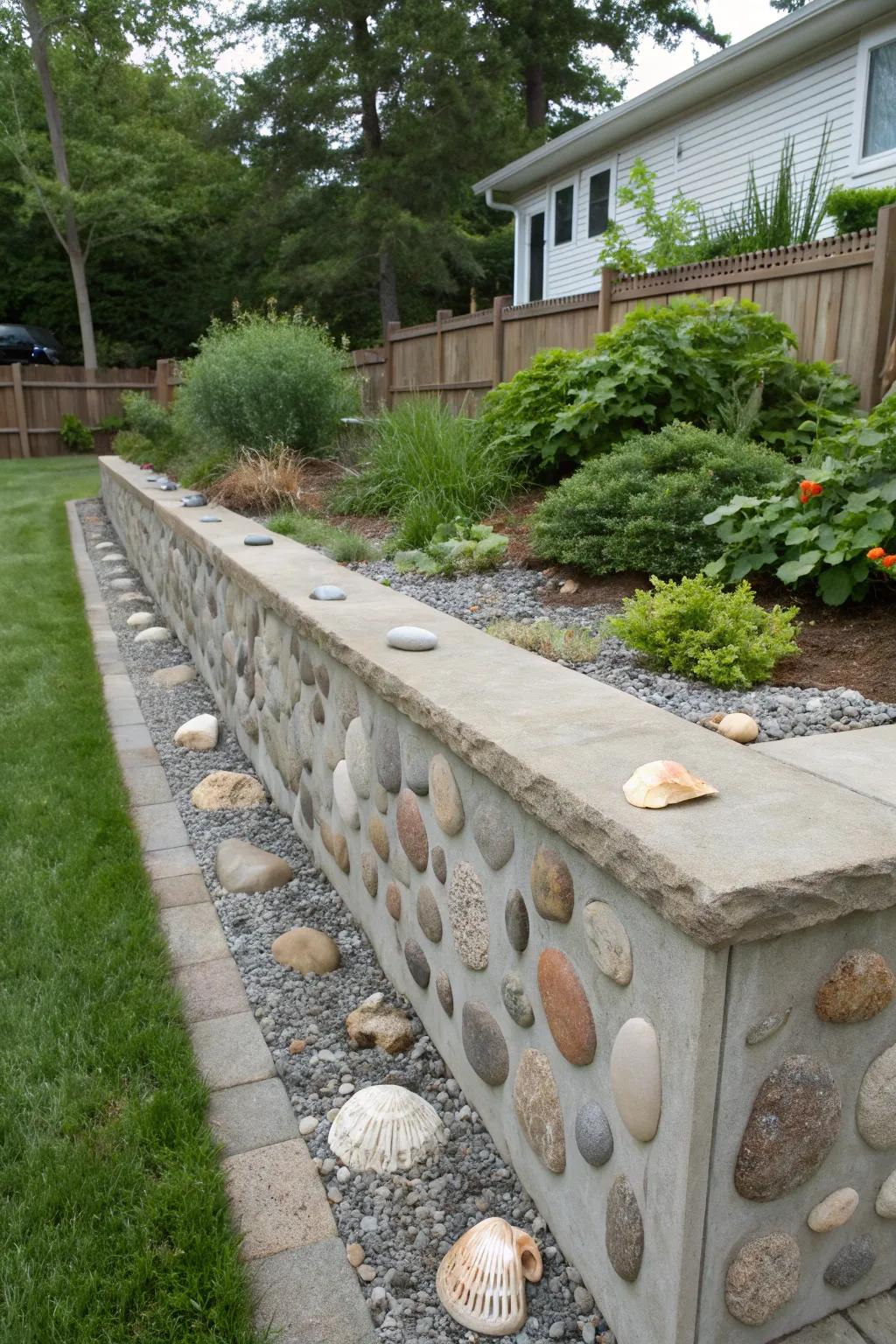
Enhance your wall by embedding decorative objects like stones or shells. I’ve used this to add a personal touch to a project, with each embedded item telling a story.
Check these products out:
- Decorative River Stones: Add natural elegance to your wall with these smooth, decorative river stones. Enhance your design today!
- Assorted Sea Shells: Transform your wall with assorted sea shells. Create a beach-inspired aesthetic effortlessly!
- Crafting Pebbles: Incorporate crafting pebbles into your wall design for a unique and textured finish. Shop now!
9. Interactive Chalkboard Surface
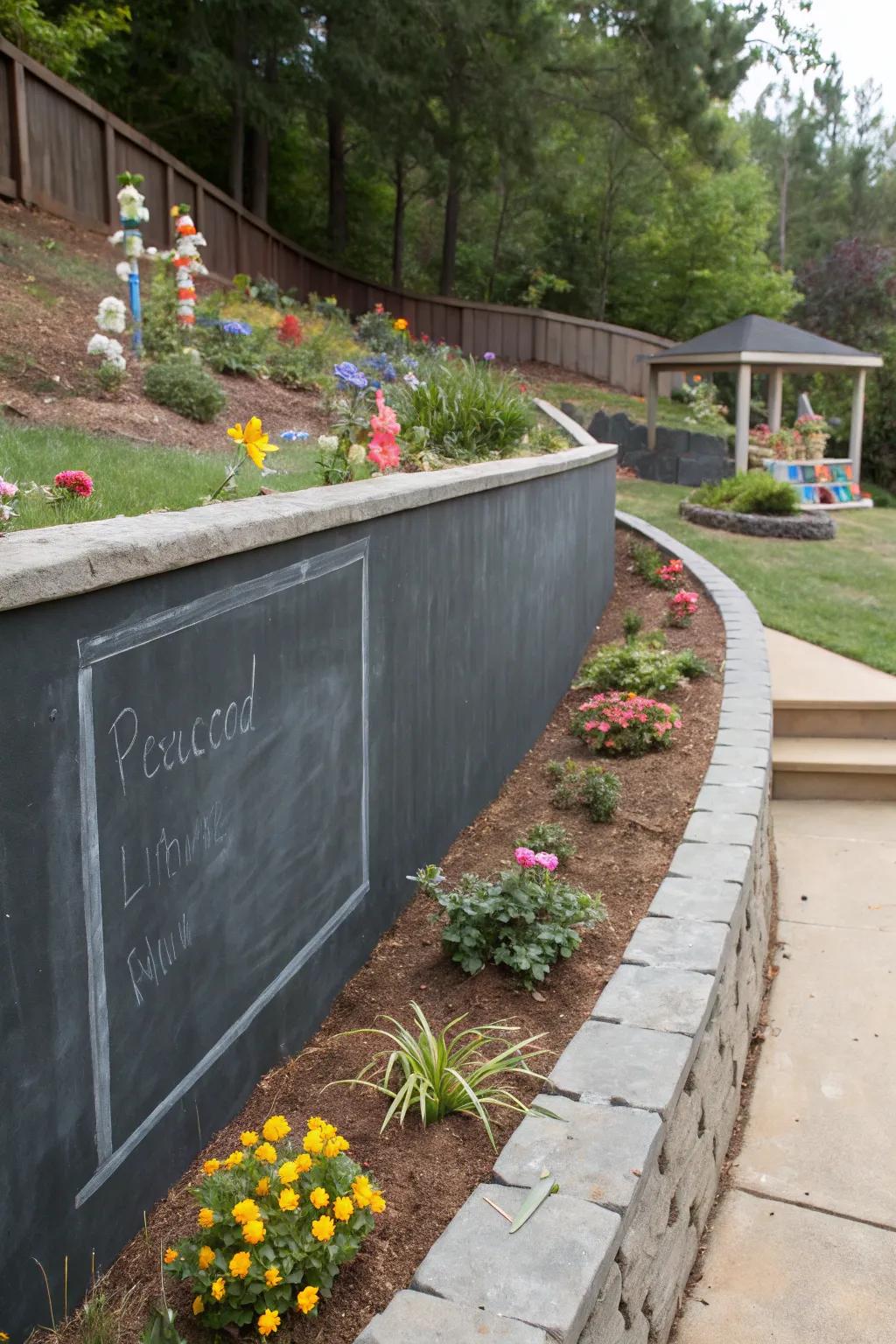
Create an interactive space with a chalkboard finish on your wall. I love how this idea brings fun and creativity to the garden, especially for families with kids.
A few things you might like:
- Outdoor Chalkboard Paint: Transform your wall into a creative space with durable outdoor chalkboard paint. Perfect for family fun!
- Chalkboard Chalk Set: Equip your family with vibrant chalks to unleash creativity on your new chalkboard wall.
- Chalkboard Cleaning Kit: Keep your chalkboard wall fresh and clean with an easy-to-use cleaning kit.
10. Natural Rock Incorporation
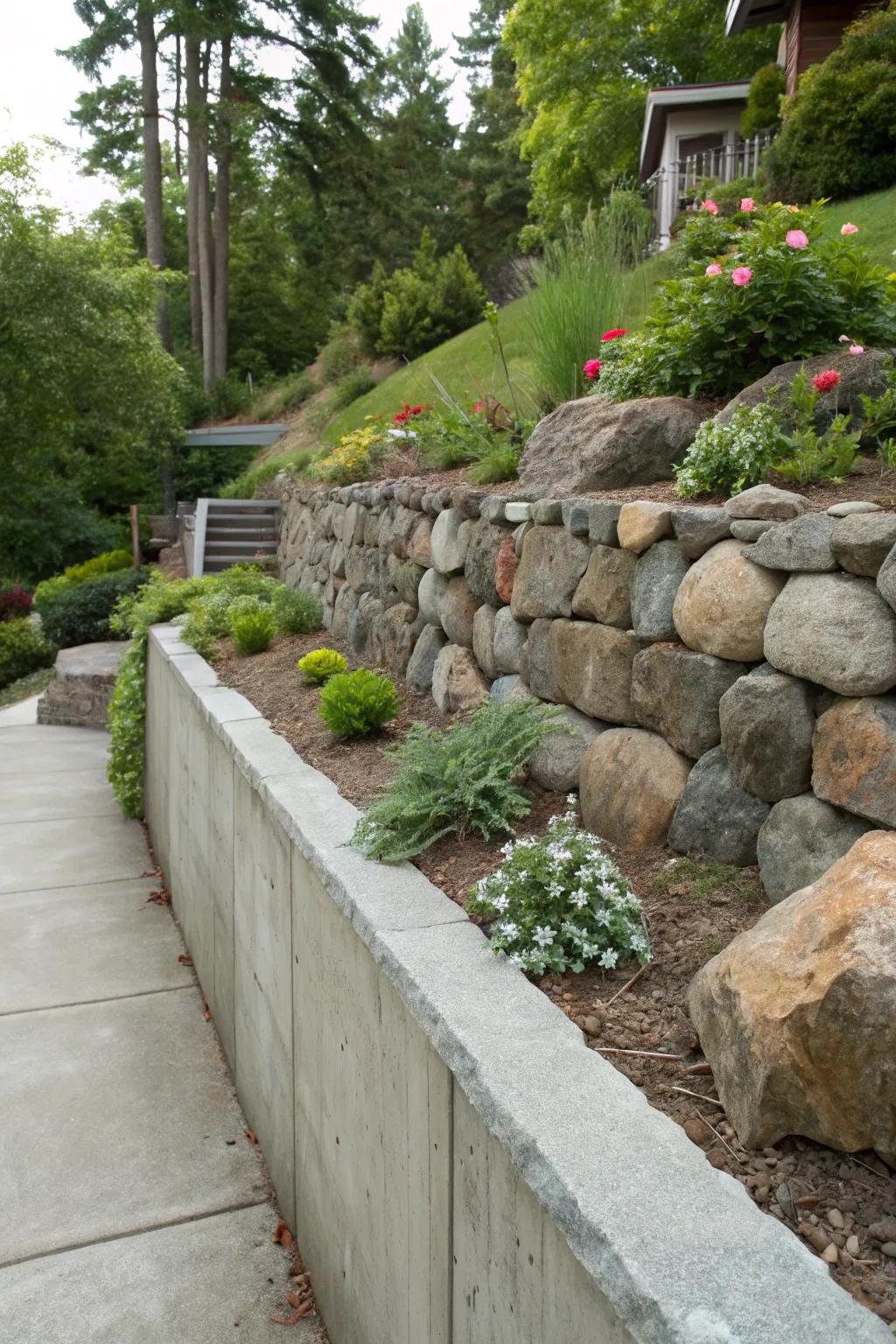
Blend your concrete wall with natural rocks for a rustic feel. I love how this method seamlessly ties the wall into its natural surroundings, offering a timeless charm.
Might be a good match:
- Decorative Garden Rocks: Enhance your retaining wall’s natural look with these garden rocks for a rustic charm.
- Outdoor Stone Adhesive: Securely attach stones to your retaining wall for enhanced stability and aesthetic appeal.
- Landscape Fabric Roll: Prevent soil erosion behind your retaining wall with this durable and easy-to-install landscape fabric.
11. Artistic Murals
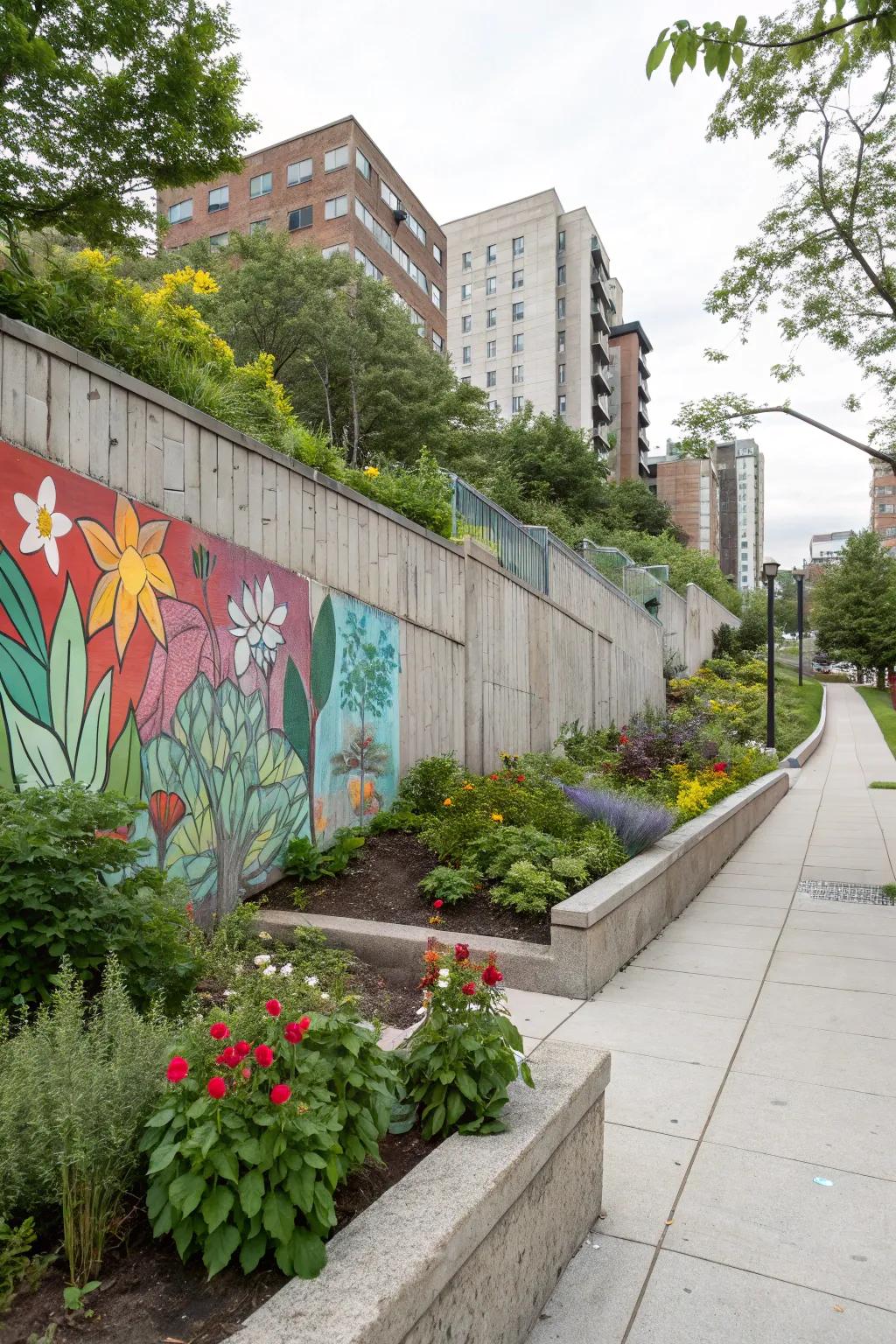
Turn your wall into a canvas for a mural, adding art to your outdoor space. I collaborated with a local artist to transform a plain wall into a vibrant masterpiece.
Possibly helpful picks:
- Outdoor Acrylic Paint Set: Unleash your creativity with durable paints perfect for creating lasting outdoor murals.
- Wall Surface Primer: Prepare your wall for painting with a primer that ensures vibrant and lasting artwork.
- Fine Detail Paint Brush Set: Achieve intricate designs and details on your mural with precision paint brushes.
12. Use as a Visual Barrier
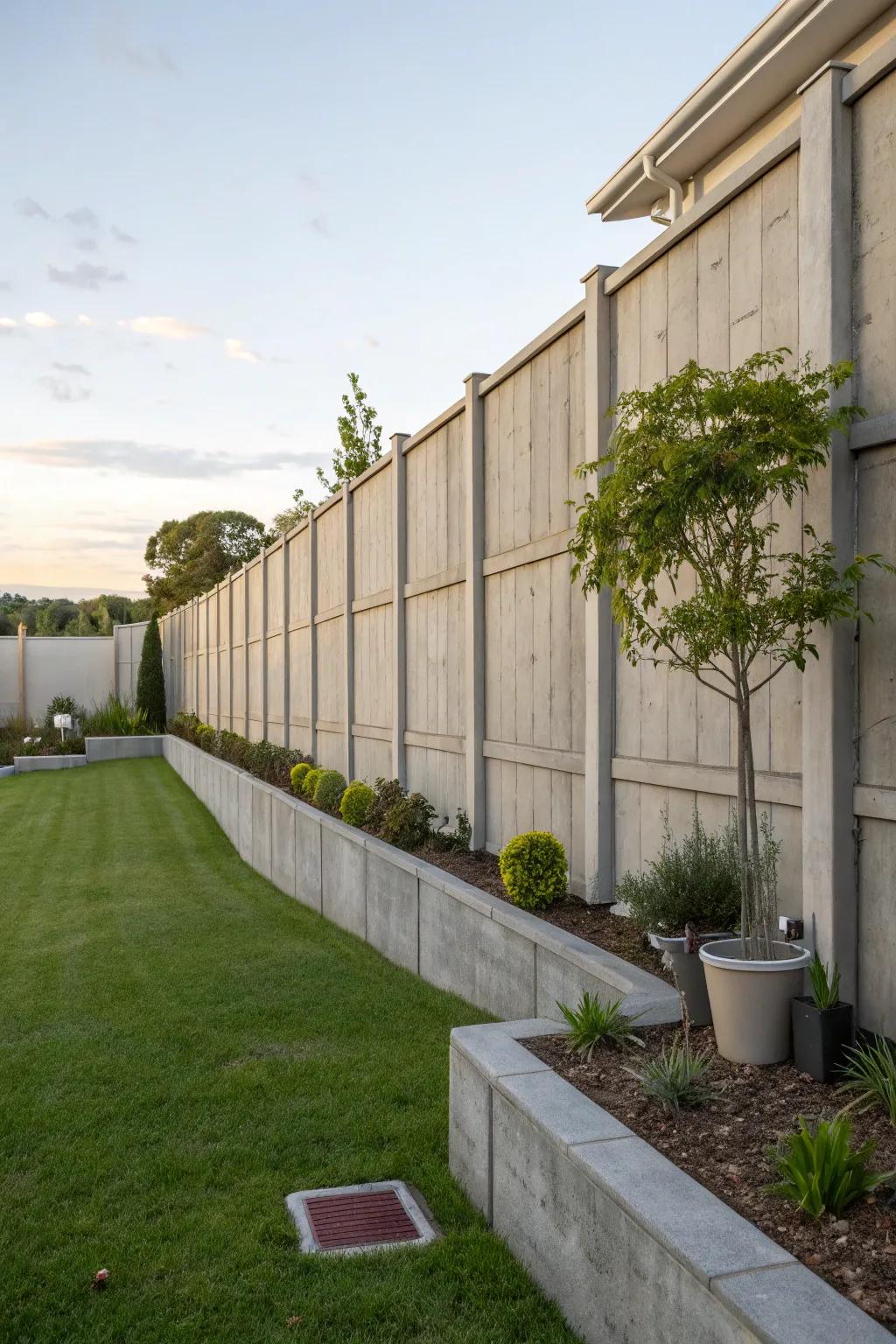
Create privacy by using your retaining wall as a visual barrier. In my backyard, this setup shields a seating area from the street, making it a peaceful retreat.
A few choices to try:
- Outdoor Patio Privacy Screen: Enhance your backyard retreat with a stylish privacy screen for added seclusion.
- Decorative Garden Planters: Add elegance and nature to your space using elegant decorative garden planters.
- LED Outdoor String Lights: Illuminate your peaceful retreat with charming LED outdoor string lights for a warm ambiance.
13. Moss and Lichen Growth
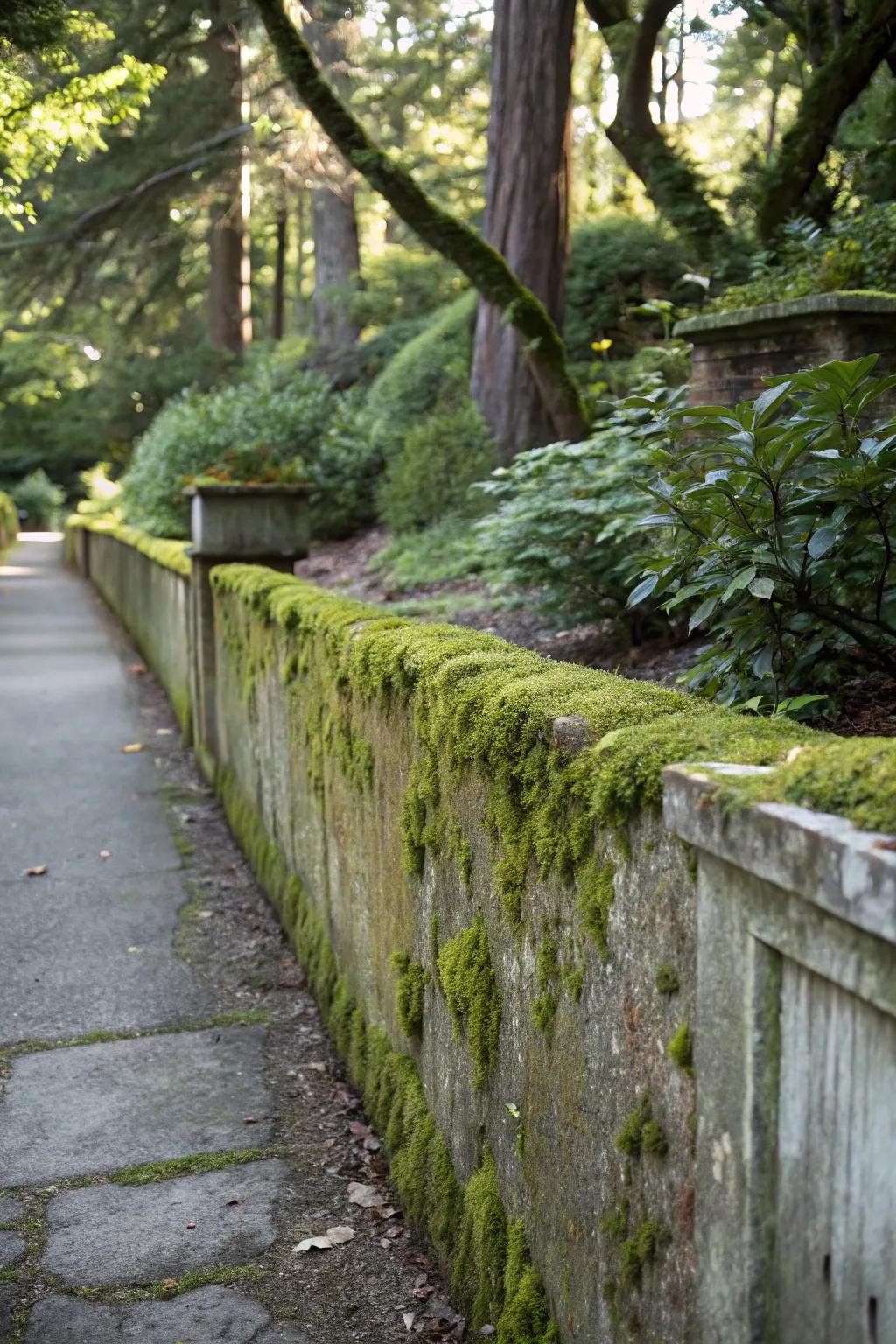
Encourage moss or lichen growth for a natural, aged appearance. In my garden, this element adds a touch of history and character to the wall.
These products might be useful:
- Moss Starter Kit: Jumpstart your wall’s transformation with this kit, perfect for cultivating lush moss growth.
- Liquid Lichen Enhancer: Enhance natural growth on your wall by applying this easy-to-use lichen enhancer.
- Moss and Lichen Gardening Book: Discover techniques and tips to successfully grow and maintain moss and lichen effectively.
